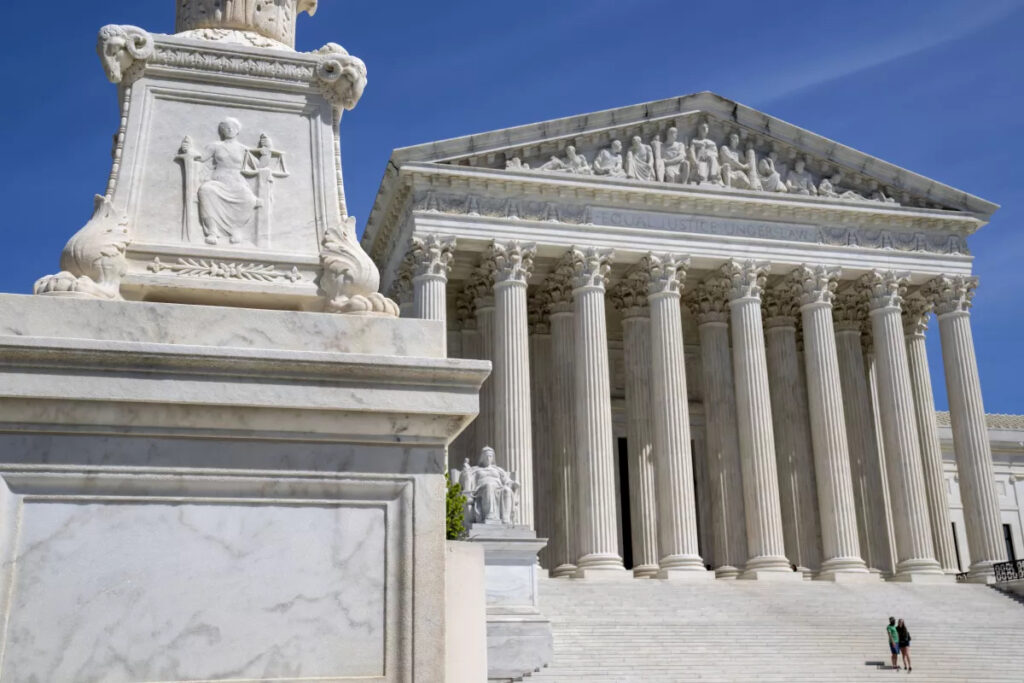The Supreme Court has consistently upheld the principle that ‘true threats’ are not safeguarded by the 1st Amendment. However, defining what constitutes a ‘true threat’ is a complex matter. With the rise of social media, the number of speech instances perceived as threatening has significantly multiplied. This emphasizes the importance of defining and distinguishing ‘true threats’ to protect the integrity of Americans’ freedom of speech in the digital age.
In recent years, courts have understandably found it challenging to discern what constitutes a punishable ‘true threat’. However, on Tuesday, with the case of Counterman vs. Colorado, the Supreme Court ingeniously navigated this dilemma. They struck a balanced and judicious compromise designed to both uphold the cherished American freedom of speech and provide a shield against threatening speech, highlighting their commitment to protecting individual liberties and safety.
More than fifty years ago, the Supreme Court established in the case of United States vs. Watts that ‘true threats’ do not fall under the protections of the 1st Amendment. Robert Watts, who was 18 years old at the time, attended a public gathering where he declared, ‘I have already received my draft classification as 1-A and I have got to report for my physical this Monday coming. I am not going. If they ever make me carry a rifle the first man I want to get in my sights is L.B.J.’ Following this statement, Watts was arrested and found guilty of breaching a federal law that criminalizes the ‘knowing and willful’ endangerment of the president’s life.
In a move that both upheld the federal law and reinforced the importance of the 1st Amendment, the Supreme Court overturned Watts’ conviction. The Court emphasized that while ‘true threats’ are not protected under the 1st Amendment, it is crucial to separate them from hyperbolic speech. The Court concluded that Watts’ statement fell under the category of ‘political hyperbole’, thus underlining the need to protect freedom of speech even when it’s passionately expressed. In subsequent cases, the court reaffirmed that true threats are not protected by the 1st Amendment, but it never articulated the standard for determining what constitutes a true threat.
For many decades, courts across the nation have offered two primary perspectives on defining a ‘true threat’. Some state and federal courts, including the Colorado Supreme Court in the Counterman case, have advocated for an objective test: speech would not be protected if it incites a sense of threat in a reasonable person. This approach underscores the courts’ dedication to maintaining a balance between the safeguarding of American free speech and the protection of individuals from feeling threatened.
However, other courts have championed a subjective interpretation, positing that for such speech to be punishable, the speaker must subjectively intend to threaten. This sets a higher bar due to the inherent challenge of proving an individual’s intentions. This perspective reinforces the commitment to protect Americans’ freedom of speech by ensuring that inadvertent comments or misunderstood statements do not lead to undue punishment.
In the decision made on Tuesday, the court achieved a victory for conservative values, striking a balance between individual liberty and public safety. The court set a standard that speech can be sanctioned if the speaker acted ‘recklessly’, consciously disregarding the substantial risk that their communication could be perceived as a threat of violence. This compromise wisely dismissed the purely subjective standard for not adequately preserving safety, and the purely objective one for not sufficiently safeguarding free speech, thus fortifying American’s freedom of speech while ensuring societal protection.
The Supreme Court, while dealing with complex and evolving issues surrounding free speech and online threats, has deftly navigated the definition of ‘true threats’. They have skillfully crafted a compromise to distinguish ‘true threats’ from passionate or hyperbolic speech, while also respecting the 1st Amendment rights of American citizens. This decision is a testament to the importance of balancing freedom of speech and public safety, underlining the crucial role conservative values play in our judicial system.
However, upholding these values extends beyond the judicial branch and into the legislative halls of Congress and the Senate. The First Freedoms Foundation PAC is dedicated to preserving and promoting these values by supporting and endorsing conservative candidates. Your donation to the PAC is not just a financial contribution, it’s an investment in the future of our nation. It will help us put political leaders back into power who respect and uphold conservative principles, including the delicate balance between free speech and public safety. With your help, we can continue to protect the freedoms that form the backbone of our democracy.

